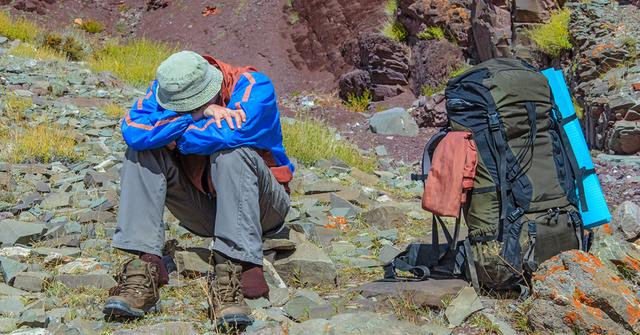Altitude sickness is a common challenge encountered in outdoor activities, especially in high-altitude regions. Every time a team sets out, there may be team members experiencing symptoms to varying degrees. It’s crucial to discuss and learn from each other’s experiences to maximize prevention and ensure the overall safety of the team. Severe cases of altitude sickness can lead to life-threatening conditions such as cerebral edema, pulmonary edema, and even sudden death.

Understanding Altitude Sickness:
Altitude sickness occurs due to the low atmospheric pressure and reduced oxygen pressure at high altitudes, leading to hypoxia in the body. Factors such as cold weather and radiation contribute to physiological changes that make the body less adaptable. From a physiological perspective, altitude sickness essentially results from decreased oxygen-carrying capacity of hemoglobin in individuals coming from lower altitudes. Therefore, it is not accurate to say that those with better physical condition are more prone to altitude sickness.
Affected Groups:
- Individuals with inadequate cerebral blood supply.
- Those with severe heart conditions.
- Individuals with symptoms of rhinitis.
- Poor adaptability due to organ issues.
Manifestations of Altitude Sickness in Various Systems:
- Cardiovascular System: Increased pulse rate upon arrival at high altitudes, which may gradually normalize with acclimatization.
- Respiratory System: Deepened and accelerated breathing, chest tightness, and shortness of breath due to mild hypoxia.
- Blood Pressure: Initially elevated blood pressure, which may normalize after some time.
- Nervous System: Heightened excitability initially, leading to symptoms like headaches, dizziness, insomnia, and forgetfulness. Severe cases may involve drowsiness, dull consciousness, delayed reactions, and, rarely, loss of consciousness or coma.
- Digestive System: Suppressed secretion and weakened function, resulting in loss of appetite, bloating, diarrhea or constipation, and abdominal pain.
Common Types of Altitude Sickness:
- High Altitude Pulmonary Edema (HAPE): Associated with respiratory infections, exertion, and cold.
- High Altitude Cerebral Edema (HACE): Mechanisms include pulmonary hypertension, increased pulmonary circulation, abnormal ventilation regulation, and genetic factors.
Preventive Measures:
- Early Acclimatization: Arrive at high altitudes a day or two in advance, engaging in aerobic exercises if the body permits, and drinking plenty of hot water.
- Herbal Medicine: Take herbal medications like Rhodiola half a month in advance. Note: opinions on its effectiveness vary.
- Cardiovascular Exercise: Engage in cardiovascular exercises to enhance lung and heart function. For example, if the planned activity involves carrying a 40kg load at 5000m altitude, exercise with a 45kg load to simulate the conditions.
- Stair-Step Ascend: Gradual ascent is the safest method to prevent acute altitude sickness. This is commonly adopted by commercial teams.
Altitude Sickness Medications:
- Furosemide (Lasix): Diuretic with benefits in pulmonary and cerebral edema.
- Aminophylline: Relaxes bronchial smooth muscles, aiding respiratory function.
- Nifedipine: Calcium channel blocker for its vasodilator effects, useful in altitude sickness.
- Dexamethasone: Corticosteroid with anti-inflammatory effects, used for various conditions including acute mountain sickness.
- Dexamethasone: Adrenal cortical hormone applicable for conditions such as systemic lupus erythematosus and rheumatoid arthritis.
General Advice:
- Caution with Medication: Avoid hasty use of altitude sickness medications. They might mask symptoms and worsen underlying conditions.
- Hydration and Rest: Consume water in smaller quantities frequently, practice deep breathing, and consume a light diet with low salt intake.
- Individual Adaptation: Personal adaptation methods may include elevating legs while sleeping for improved blood circulation.
In conclusion, preventive measures such as gradual acclimatization, herbal medications, cardiovascular exercises, and stair-step ascent are recommended. Medications should be used cautiously, and attention to individual body responses is crucial. In case of symptoms, rest, hydration, and gradual descent are advised, with medical assistance sought if conditions persist or worsen.

